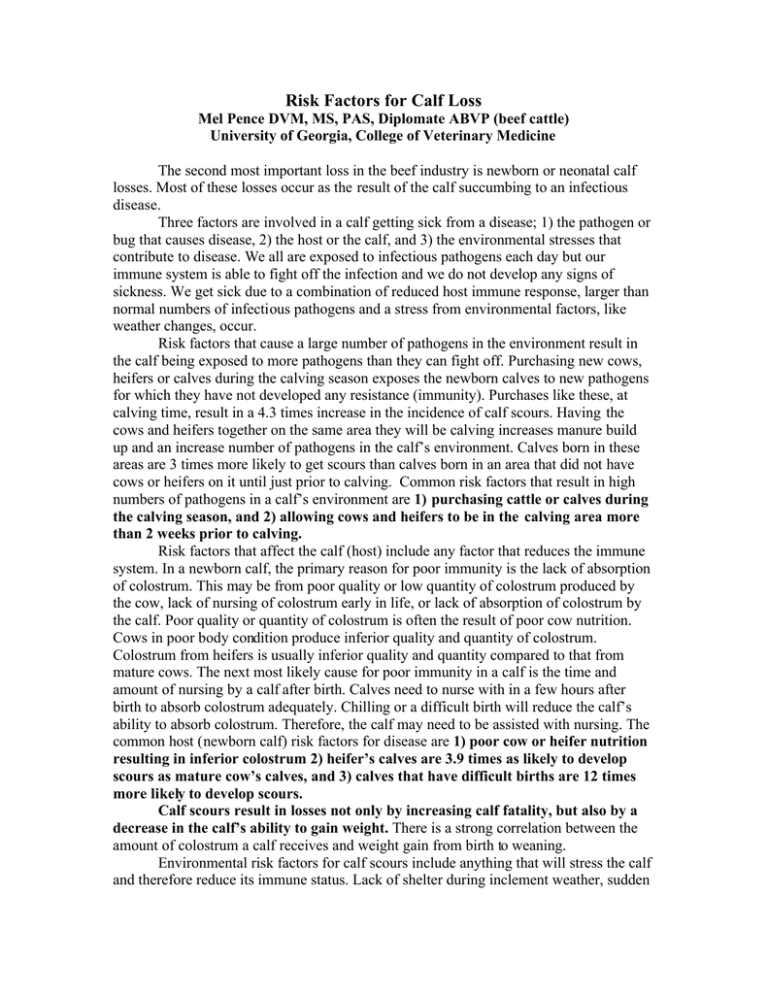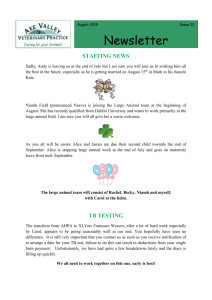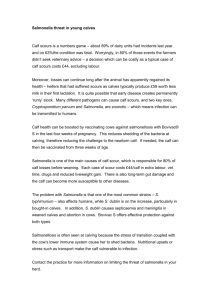Risk Factors for Calf Loss
advertisement

Risk Factors for Calf Loss Mel Pence DVM, MS, PAS, Diplomate ABVP (beef cattle) University of Georgia, College of Veterinary Medicine The second most important loss in the beef industry is newborn or neonatal calf losses. Most of these losses occur as the result of the calf succumbing to an infectious disease. Three factors are involved in a calf getting sick from a disease; 1) the pathogen or bug that causes disease, 2) the host or the calf, and 3) the environmental stresses that contribute to disease. We all are exposed to infectious pathogens each day but our immune system is able to fight off the infection and we do not develop any signs of sickness. We get sick due to a combination of reduced host immune response, larger than normal numbers of infectious pathogens and a stress from environmental factors, like weather changes, occur. Risk factors that cause a large number of pathogens in the environment result in the calf being exposed to more pathogens than they can fight off. Purchasing new cows, heifers or calves during the calving season exposes the newborn calves to new pathogens for which they have not developed any resistance (immunity). Purchases like these, at calving time, result in a 4.3 times increase in the incidence of calf scours. Having the cows and heifers together on the same area they will be calving increases manure build up and an increase number of pathogens in the calf’s environment. Calves born in these areas are 3 times more likely to get scours than calves born in an area that did not have cows or heifers on it until just prior to calving. Common risk factors that result in high numbers of pathogens in a calf’s environment are 1) purchasing cattle or calves during the calving season, and 2) allowing cows and heifers to be in the calving area more than 2 weeks prior to calving. Risk factors that affect the calf (host) include any factor that reduces the immune system. In a newborn calf, the primary reason for poor immunity is the lack of absorption of colostrum. This may be from poor quality or low quantity of colostrum produced by the cow, lack of nursing of colostrum early in life, or lack of absorption of colostrum by the calf. Poor quality or quantity of colostrum is often the result of poor cow nutrition. Cows in poor body condition produce inferior quality and quantity of colostrum. Colostrum from heifers is usually inferior quality and quantity compared to that from mature cows. The next most likely cause for poor immunity in a calf is the time and amount of nursing by a calf after birth. Calves need to nurse with in a few hours after birth to absorb colostrum adequately. Chilling or a difficult birth will reduce the calf’s ability to absorb colostrum. Therefore, the calf may need to be assisted with nursing. The common host (newborn calf) risk factors for disease are 1) poor cow or heifer nutrition resulting in inferior colostrum 2) heifer’s calves are 3.9 times as likely to develop scours as mature cow’s calves, and 3) calves that have difficult births are 12 times more likely to develop scours. Calf scours result in losses not only by increasing calf fatality, but also by a decrease in the calf’s ability to gain weight. There is a strong correlation between the amount of colostrum a calf receives and weight gain from birth to weaning. Environmental risk factors for calf scours include anything that will stress the calf and therefore reduce its immune status. Lack of shelter during inclement weather, sudden changes in temperature, lack of drainage in the calving area are examples of environmental stresses. Prior planning and good management prior to and during the calving season can reduce the risk of losses due to calf scours and pneumonia.




